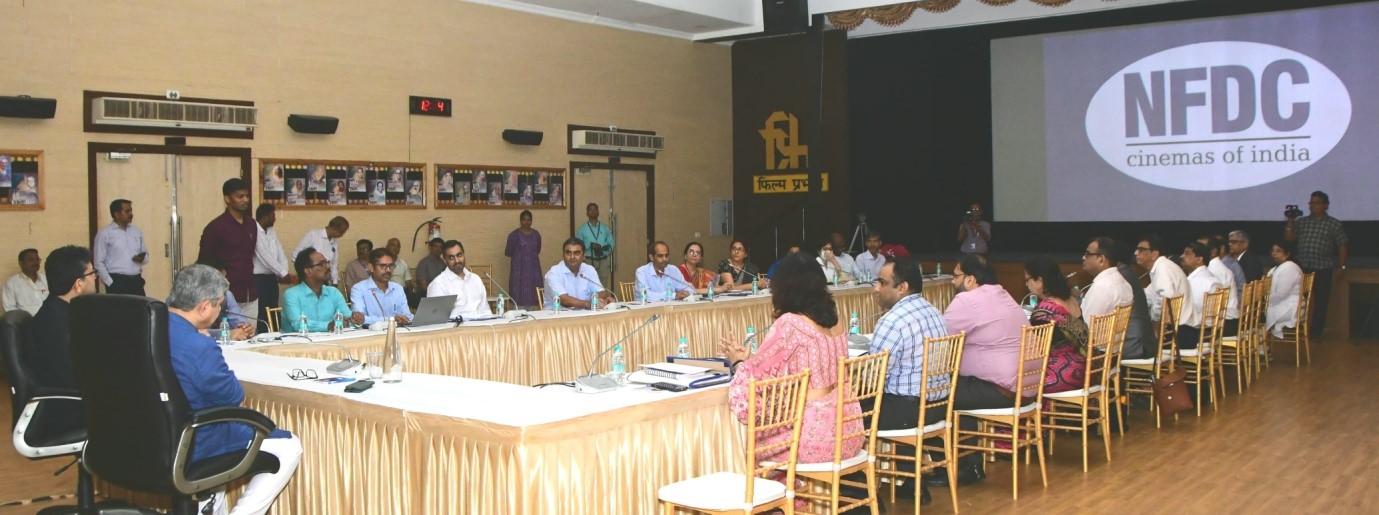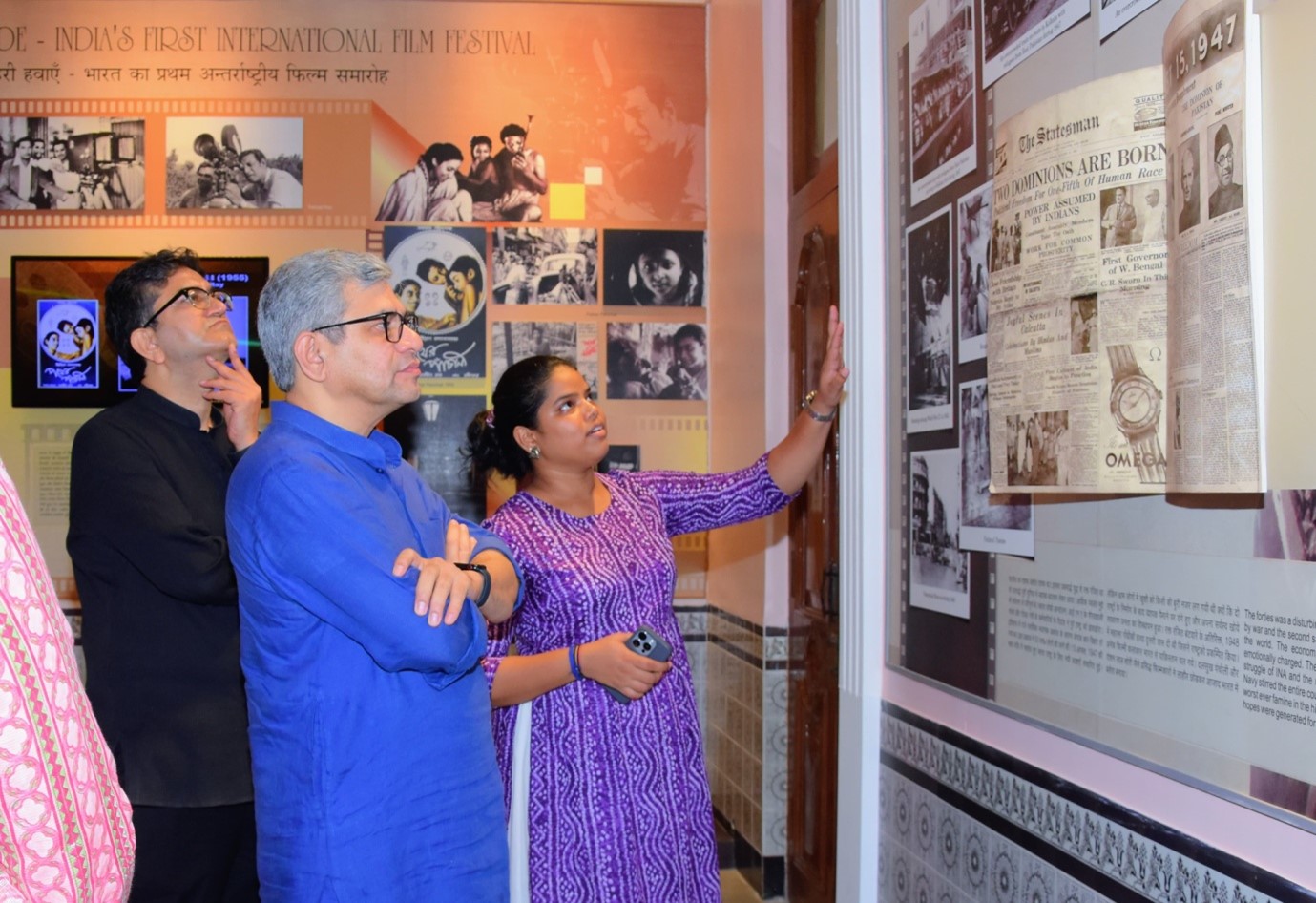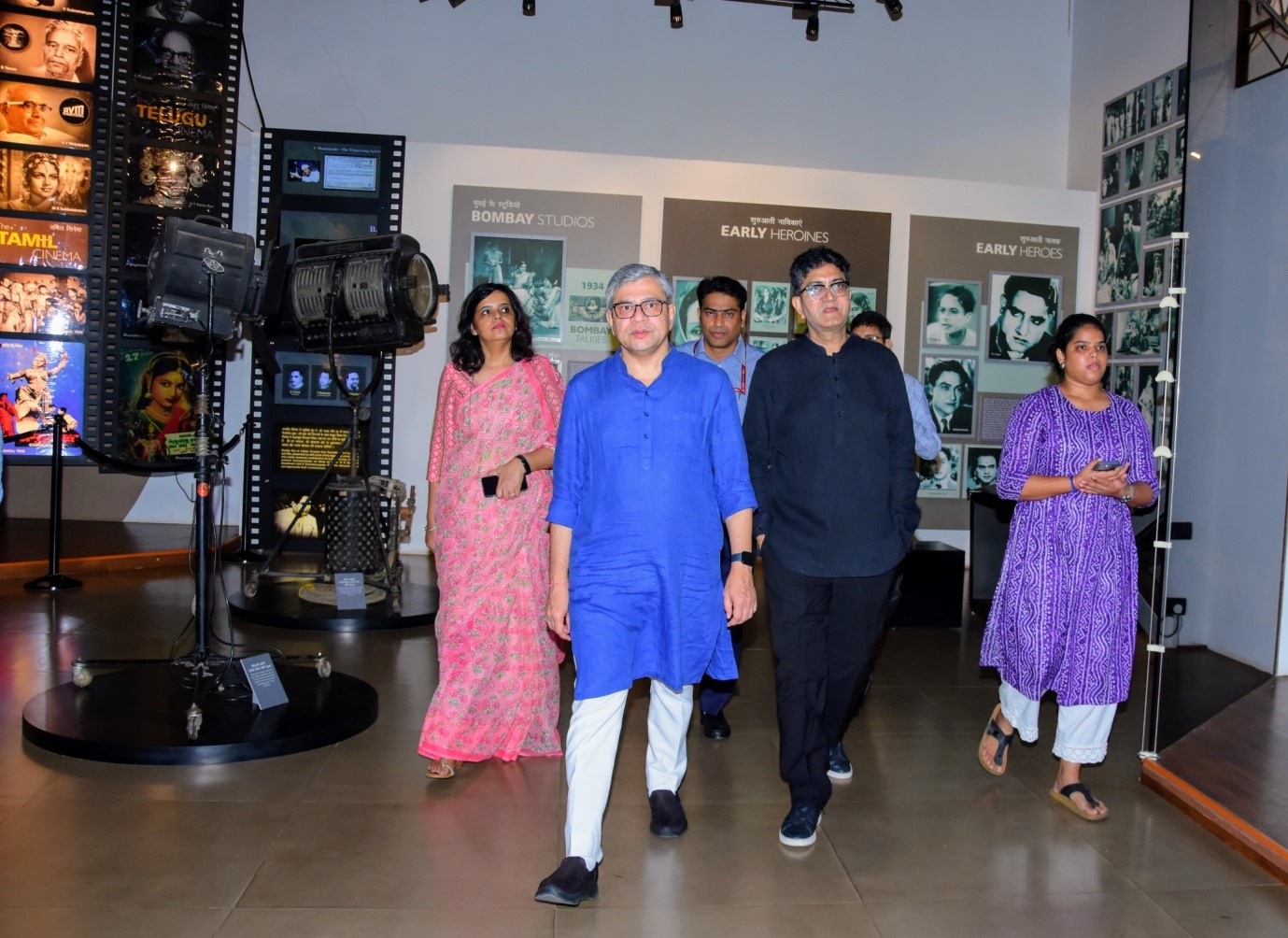Union Minister for Information and Broadcasting, Shri Ashwini Vaishnawvisited the NFDC campus in Mumbai today to conduct an extensive review of the activities of the Central Board of Film Certification (CBFC) and the National Film Development Corporation of India (NFDC).

During his visit, the Minister also visited the National Museum of Indian Cinema including the heritage building of Gulshan Mahal. The exhibits showcase the rich and diverse heritage of Indian films, from the silent era to the present day, highlighting the immense contribution of cinema to the nation’s cultural fabric.
Chairperson, CBFC, Shri Prasoon Joshi briefed the Minister on the latest initiatives in the certification process and the film industry as a whole.

The Minister in his review emphasised on the efforts required to enhance employment in the film sector manifold. He called for the formulation of plans that create high-quality jobs and are also commercially viable. He also took the opportunity to commend the NFDC-NFAI (National Film Archives of India) for the exemplary work in restoring and preserving India’s cinematic heritage.
He sought to further strengthen the efforts to safeguard films that are a crucial part of the country’s cultural and historical legacy, ensuring that future generations can enjoy and learn from this rich artistic heritage. He also emphasized the need for complete industry orientation in the activities being undertaken in the setting up of the National Centre of Excellence in AVGC sector.
Shri Vaishnaw also reviewed the progress of the National Centre of Excellence in Animation, stressing the importance of animation and visual effects as growing sectors within the Indian entertainment industry.

Director General, Western Region, Ministry of Information & Broadcasting, Ms. Smita Vats Sharma, Managing Director (NFDC), Prithul Kumar, CEO (CBFC)Rajendra Singhand other officials of NFDC and CBFC were also present.
During his visit event the Minister also planted asapling in the premises of NFDC under the initiative ‘Ek Ped MaaKeNaam’.
 Matribhumi Samachar English
Matribhumi Samachar English


